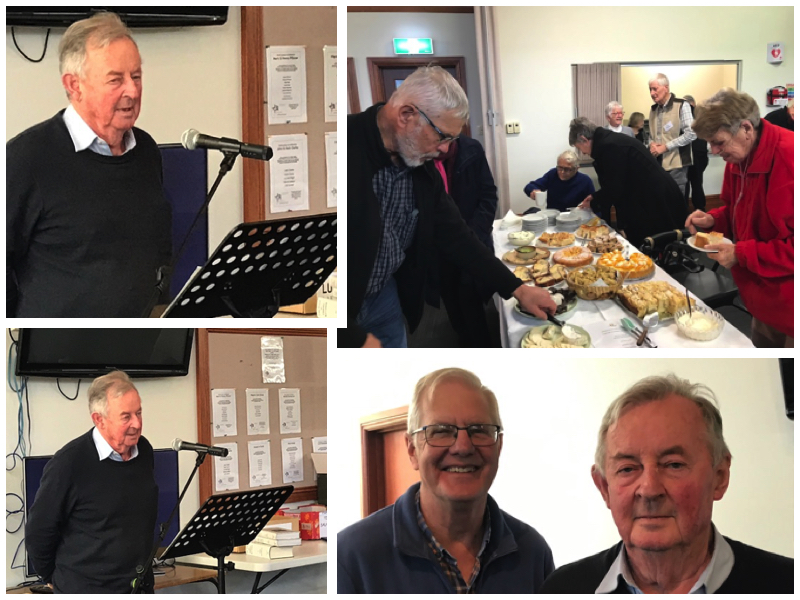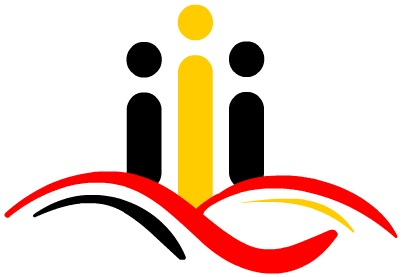Solving Problems, Clearing Mysteries
by John Clarke
What do you do when about to enter the German Autobahn you hear a crash, a loud scraping, and your hire car grinds to a halt?
At the last meeting of the German speaking group the guest speaker was John Strehlow. An author, playwright and highly successful stage director in Australia and in Europe, his topic was not his career, but his research into his family’s history, particularly his research into the life and background of his paternal grandmother Frieda Keysser.

The Strehlow name is closely associated with the Hermannsburg Mission in Central Australia. Born and raised in Germany, twenty-one year old Carl Strehlow came to South Australia in 1892 and was ordained a Lutheran pastor at Light Pass. He began his missionary work at Killalpaninna near Cooper’s Creek. A gifted linguist, he quickly learned Dieri, the language of the native people, and undertook the demanding task of translating the New Testament into the Dieri language.
Much has been written about Carl Strehlow, but very little about his wife Frieda. She and Carl had become engaged before he left Germany, and it was not until 25 September, 1895 that they were married at Point Pass in South Australia. Their honeymoon would have been twenty-eight days on a horse and cart, travelling through country very different from that Frieda had left so recently to the Hermannsburg Mission, which Carl had been appointed to lead the previous year.
What did John Strehlow know about his grandmother? He knew of her work at the Mission with Aboriginal women and girls, her success in reducing infant mortality, her translation of hymns into the Arrarnta language, her collection from the women of birth and women’s rituals (information which her husband would have found impossible to collect). He knew that she and Carl had six children (born at Hermannsburg without medical assistance) and that five of those children (all except John’s father Ted) were placed in German boarding schools and lived the remainder of their lives in Germany.
He knew her name Frieda, but not her surname or anything of her family background. It required many years of research in Germany to uncover the facts and clear away the mysteries. He discovered that her surname was Keysser, that for generations her family had acquired wealth through the production of iron, but that her father had lost much of that money through the collapse of the family business. That loss was still deeply felt, as John discovered at a meeting on a railway platform with an elderly aunt on a bitterly cold German day.
It was the detail of his search for information as much as the information itself which made John’s talk especially entertaining.
What did he do when his car broke down? He identified the problem as a rusted exhaust. He used a wire coat hanger to form a cradle for the fractured pipe, went to a nearby shop and bought some twine, and tied the pipe to the body of the car. The delay allowed him time to rethink his plans and make the decision to head to Ulm. There he found a treasure trove of Frieda’s letters.
In 1910 the Strehlow family left Hermansburg and travelled to Germany. It was at that time they found schools for their children. Frieda did not wish to return to Australia, but letters were received from their Aboriginal friends, saying how much they were missed and asking them to come back soon.
From 1912 to 1922 Carl and Frieda continued their work at the Hermannsburg Mission. Carl died at Horseshoe Bend, 250 kilometres from Hermannsburg, on his way to Adelaide for medical treatment. Frieda became a matron at Immanuel College, Adelaide before returning to Germany in 1931. She died at Neuendettelsau (the town where so many of the German missionaries trained) in 1957, at the age of 81.
The next Kaffee und Kuchen meeting will be held at the Langmeil Centre, 7 Maria Street, Tanunda, on Monday, 25 August, starting 1pm.
